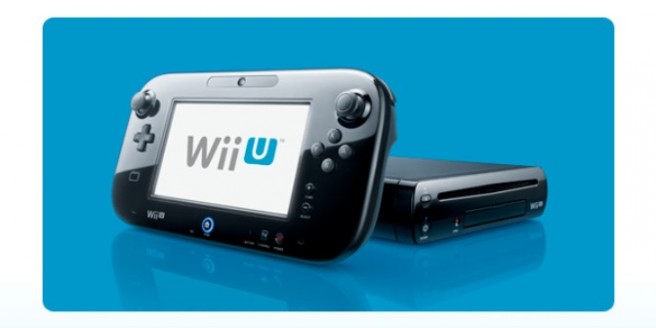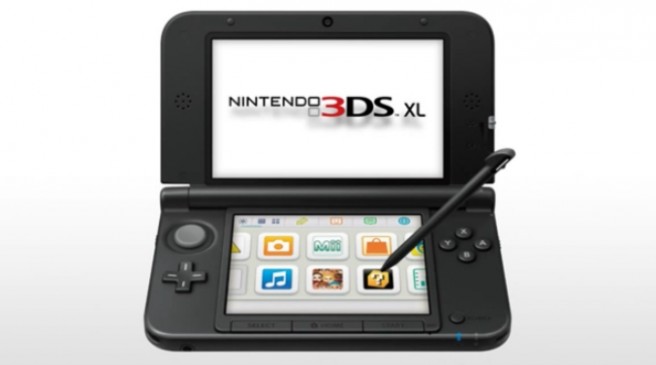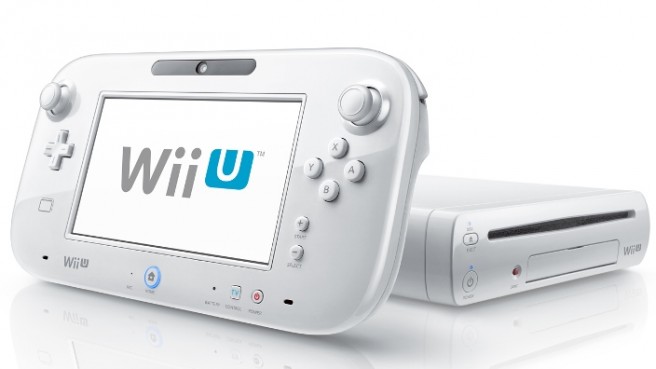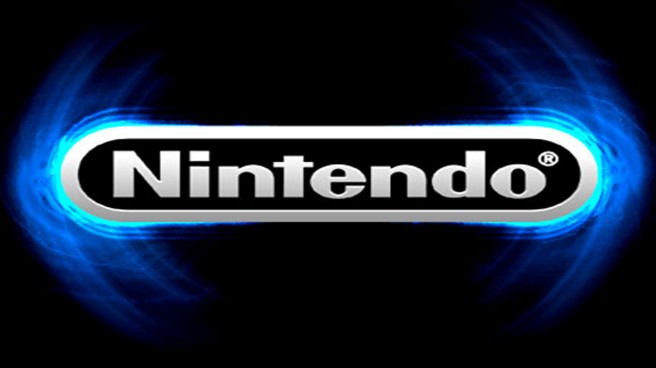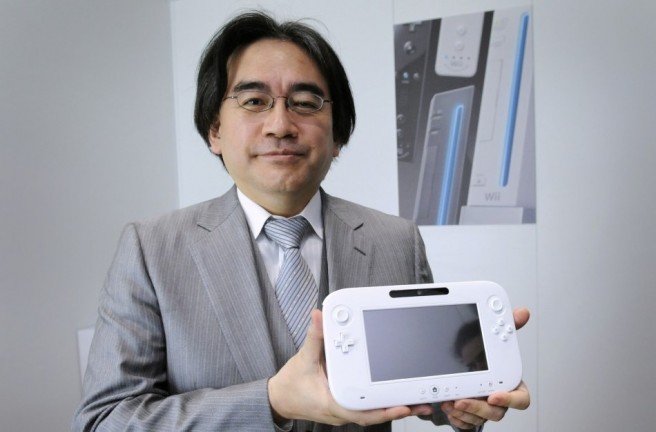Iwata on differences between promotion for Wii U and consumer attention in Japan vs. overseas
Posted on 10 years ago by Brian(@NE_Brian) in News, Wii U | 0 comments
Nintendo president Satoru Iwata discussed two important topics for Wii U and how they apply to Japan versus overseas territories last week.
When it comes to promotion for the system, Iwata explained that more resources were devoted to Wii U as opposed to 3DS because Monster Hunter 4 and Pokemon X/Y were able to carry the handheld to a certain extent. Because Nintendo was in a position to properly “focus our energy on communicating Wii U in the year-end sales season”, sales in Japan rose to roughly 100,000 units per week.
Overseas, Nintendo was looking “to boost Nintendo 3DS sales to an explosive level”. The company also needed to provide resources towards Wii U at the same time. “As a result, we were not able to fully focus on promoting either of them,” he admitted. Nintendo originally hoped to “achieve sold sales” for 3DS by the time Pokemon X/Y had arrived and then shift towards Wii U, but “this plan did not work and we had to spread our resources over two platforms.” Additionally, “neither of them achieved explosive sales, a point we need to deeply reflect on.”
On the topic of “consumers’ attention,” Iwata said “there is a difference between the overseas markets in which other companies launched new home consoles, and the Japanese market in which their launches have been held off until this year.”
He continued:
I believe not many consumers wavered between Wii U and those new consoles from other companies because I believe that our user demographics are different to a certain degree. We tried to create a buzz in the overseas markets with Wii U that would encourage many people to look for information about Wii U, making it easier to get our messages across, but this proved to be more difficult than we had expected. I truly need to reflect on the outcome of this year-end sales season, which, in my opinion, was the worst year-end sales season in the overseas markets since I became president, and I would like to bring them back on the right track as soon as possible.
More: sales, Satoru Iwata, top
Iwata on year-end 3DS sales, need to find out why it wasn’t at the top of children’s wish lists
Posted on 10 years ago by Brian(@NE_Brian) in 3DS, News | 6 Comments
The 3DS sold quite well during the last few months of 2013, but it didn’t hit Nintendo’s expectations. Pokemon X/Y provided a solid boost to the system, so Nintendo was “confident about the ultimate sales volume for the end of the year,” according to president Satoru Iwata. In the end though, “sales did not grow as expected.”
Iwata, speaking during the Q&A portion of Nintendo’s investor briefing, mentioned that the 3DS didn’t find itself at the top of children’s wish lists. Given how the 3DS costs somewhere in the range of $150 – $200 for most, and other products are competing for consumers’ dollars for the holiday season, “you need to make sure that your product is at the top of children’s wish lists”.
Keeping all of this in mind, 3DS did show high growth in France for the year-end period. Iwata says Nintendo is currently “examining what was different about France, and we would like to apply our findings to other regions.”
More: sales, Satoru Iwata, top
Even more comments from Iwata about character licensing, won’t license Mario to another company for a Mario game
Posted on 10 years ago by Brian(@NE_Brian) in General Nintendo, News | 1 Comment
Even more comments from Nintendo president Satoru Iwata have come in regarding plans for character licensing. Chief among them is a statement from Iwata in which he mentioned, “I do not envisage a scenario in which we would license Mario out to another company to make a Mario video game.”
You can find Iwata’s complete remarks below.
More: Mario, Satoru Iwata, top
Iwata further teases Quality of Life plans
Posted on 10 years ago by Brian(@NE_Brian) in General Nintendo, News | 4 Comments
Nintendo president Satoru Iwata shared a few more words about the company’s upcoming Quality of Life plans during the Q&A portion of its investor briefing last week. Look for his comments below.
More: quality of life
Iwata’s complete comments on potential M&A deals
Posted on 10 years ago by Brian(@NE_Brian) in General Nintendo, News | 0 comments
We recently heard that Nintendo would be open to the possibility of mergers and acquisitions. The company just put up its investor Q&A in English, so we now have Satoru Iwata’s complete comments on the matter. You can find them (plus more talk of character licensing) below.
More: M&A, Satoru Iwata
Iwata on integrating handheld/console teams, next system will “absorb the Wii U architecture adequately”, more
Posted on 10 years ago by Brian(@NE_Brian) in News, Wii U | 38 Comments
Satoru Iwata delivered some incredibly insightful comments as to what Nintendo has planned for its future hardware during an investor briefing Q&A last week.
As many of you know, Nintendo combined its console and handheld teams in 2013. Thanks to “vast technological advances, it became possible to achieve a fair degree of architectural integration.”
Iwata says that the integration of the two teams can help overcome some technical difficulties. He mentioned, as an example, that it currently takes “a huge amount of effort” to port Wii games to 3DS, and 3DS titles to Wii U. “If the transition of software from platform to platform can be made simpler, this will help solve the problem of game shortages in the launch periods of new platforms,” he said.
Integrating the console and handheld teams will also allow Nintendo to avoid situations in which it previously “ended up developing a system that was completely different from its predecessor.” Aside from the transition from GameCube to Wii, “all the other systems required ground-up effort.”
Iwata left a tease as for what’s to come, stating:
In this perspective, while we are only going to be able to start this with the next system, it will become important for us to accurately take advantage of what we have done with the Wii U architecture. It of course does not mean that we are going to use exactly the same architecture as Wii U, but we are going to create a system that can absorb the Wii U architecture adequately. When this happens, home consoles and handheld devices will no longer be completely different, and they will become like brothers in a family of systems.
Be sure to head past the break for Iwata’s comments in full, as there’s quite a bit more he shared that would be silly to summarize further.
More: Satoru Iwata, top
Nintendo will distribute/publish more Japanese 3DS games in the west, Iwata on third-party Wii U support, more
Posted on 10 years ago by Brian(@NE_Brian) in 3DS, News, Wii U | 5 Comments
Nintendo president Satoru Iwata addressed the topic of third-party support – for both 3DS and Wii U – during the company’s investor briefing last week.
Regarding 3DS, Iwata says the platform has become “the number one dedicated video game system that Japanese third-party publishers are focusing on” due to its “overwhelmingly strong presence in the hardware as well as software markets”. Nintendo will continue to distribute and publish some Japanese titles “this year and the next.”
The situation is different in the west, as publishers tend to focus more on consoles as opposed to handhelds. However, Iwata noted: “the fact that Nintendo 3DS has now sold over 10 million units in both the U.S. and Europe seems to be news for third-party publishers, and we have recently been receiving more proposals from third-party publishers.”
When it comes to Wii U, “opinions significantly differ among third-party publishers.” There are still some publishers – particular those “that has great affinity with audiences that Nintendo has historically been strong with” – who continue to support the console and even look to assist Nintendo in getting people to upgrade from Wii to Wii U. “On the other hand, software publishers are not necessarily keen on making games in genres that have weaker affinity with audiences that Nintendo has not been as strong with, where making a huge investment does not guarantee a sufficient return,” Iwata explained. Ultimately, Iwata believes Nintendo must “create a strong foundation in areas Nintendo excels at and achieve a sufficient sales volume,” which is the first step for the company.
More: Satoru Iwata, top
Nintendo on downplaying tech specs
Posted on 10 years ago by Brian(@NE_Brian) in General Nintendo, News, Wii U | 88 Comments
Nintendo has always been coy when it comes to technical specs. We rarely see spec sheets from the company, and we often don’t see comments about what Nintendo’s systems can do from a technical perspective.
Last week, Nintendo senior managing director Genyo Takeda spoke with investors about how “Nintendo tries not to emphasize the raw technical specifications”, instead opting to place the focus “on how we can use technology to amplify the value of our entertainment offerings”.
Takeda said, “Whether a machine is powerful or not only has meaning in the context of whether that can express itself in terms of gameplay to consumers.”
More: Genyo Takeda, top
Miyamoto on providing enough software for Nintendo systems, working with outside devs to recreate past games for Wii U, more
Posted on 10 years ago by Brian(@NE_Brian) in News, Podcast Stories, Wii U | 7 Comments
One investor asked Nintendo how it will address the lack of software available for its systems at launch during the company’s investor briefing last week. Shigeru Miyamoto addressed the question, suggesting that the situation had been improved with Wii U. New Super Mario Bros. U and Nintendo Land were available at launch, followed by Pikmin 3 “after a long interval”, and Supre Mario 3D World at the end of last year. Mario Kart 8 and Super Smash Bros. are also on the way.
“Therefore, I feel that we have managed to overcome the challenge of releasing enough first-party franchises on Wii U,” he said.
Miyamoto later addressed what Nintendo believes was Nintendo’s biggest issues last year: “we failed to communicate the true value of Wii U, failed to make children persuade their parents to buy our products for them, and failed to offer products that parents could not resist.” He stated that, as a result, Nintendo “will need to put more focus on creating experiences that utilize the GamePad that can also be fully enjoyed when playing alone.”
Miyamoto’s final comments were about developing for Wii U. Due to the huge evolution in technology between Wii and Wii U, just using a technique such as shaders “has significantly changed our development environment as well as our developers themselves and the time to develop games, all of which are areas toward which we have been making significant reinforcements.” Miyamoto said Nintendo is now looking to work with “many outside developers” so that “past games” can be reborn on Wii U.
More: Shigeru Miyamoto, top
Iwata on the importance of momentum, never thought about resigning
Posted on 10 years ago by Brian(@NE_Brian) in 3DS, News, Wii U | 0 comments
Momentum is something that we often hear Nintendo discussing. The 3DS, for example, saw a tough start, but Nintendo turned things around with a price drop and steady stream of software. This provided a momentum boost for the system.
Unfortunately, Wii U has yet to see any sort of momentum. This is something that Nintendo president Satoru Iwata reaffirmed to investors last week.
In spite of the Wii U’s struggles though, Iwata says he “never thought of resignation as an option, and I believe that my job is to do whatever I can do to deliver results, and I am as passionate about this responsibility as ever.”
Read Iwata’s full comments on momentum below.
